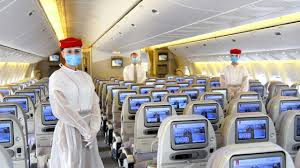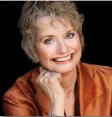The Satellite Industry in a Post-Pandemic World
by Elisabeth Tweedie
London, UK, December 4, 2020--“And now for something completely different.” Words first uttered by John Cleese in 1971, and repeated by Lorraine Whitfield, Chief Events and Marketing Officer, Euroconsult, at the opening of this year’s World Satellite Business Week. Words that sum up, not only this conference, being the first time that WSBW has been a virtual conference, but words that also sum up this year for most of us.
If I had a dollar for every time I heard the words “resilient” or “resilience,” I would probably have left this conference with enough money for my airfare to Paris for next year’s event! It was a word that kept reoccurring, sometimes uttered with surprise, as panelists described how well their companies had fared this year. As we all know, several major companies including Intelsat, Speedcast, Global Eagle, OneWeb and Phasor have filed for Chapter 11 protection. Of those Intelsat was the only one represented on panels, but Steve Spengler, CEO was one of many who used that word: “What we do is essential. It was a seamless transition to this weird work environment, we have shown resilience and for the most part it has been business as usual.” On the same panel, both Steve Collar, CEO SES and Rodolphe Belmer, CEO Eutelsat used the same expression, pointing to growth in both networks and broadcast sectors.
Upbeat Mood
In his opening introduction Pacôme Révillon CEO of Euroconsult, singled out the maritime and aeronautical sectors as being the hardest hit by Covid-19. While this would seem to be obvious, the key players in these markets were neither particularly downcast nor pessimistic about the future, although one or two companies had suffered setbacks this year. However, without exception, everyone regarded the impact to these two sectors as temporary. For the IFC sector, Euroconsult is projecting a 12-15% CAGR for Service Operator revenues, in the ten years to 2029 and a 17-20% CAGR for satellite operator revenues in the same period; leading to totals of US$3.7-4.8 Billion and US$1.6-2.1 Billion respectively.
Rupert Pearce, CEO Inmarsat was particularly upbeat, saying that the company is “highly resilient to the impact of the pandemic.” While he
 |
|
At the Euroconsult World Satellite Business Week, Rupet Pearce, CEO-Inmarsat and Steven Spengler, CEO of Intelsat were bullish on the inflight connectiivty market rebounding post-pandemic. Image Source: cntraveler.com |
acknowledged that the aviation sector had been hit, saying “We can’t earn if planes don’t fly” he pointed out that in 2019 this sector accounted for less than 20% of Inmarsat’s revenue. However, it is a sector from which he is expecting significant growth. Inmarsat commissioned a report from the London School of Economics in 2017, and this report projected that the adoption of Inflight Connectivity (IFC) by the airlines could lead to cost savings of US$11-15 Billion by 2035. Rupert also mentioned that the same report indicated that: “by 2030, US$150 Billion a year of new revenue would be generated from monetizing a passenger…from providing services to passengers in a seat.”
Steve Spengler was similarly upbeat about the aviation sector, saying that he expected the segment to show “double digit growth over the next ten years.” Intelsat, of course has just acquired GoGo a key service provider of Inflight Connectivity (IFC).
Pearce also stated that in the maritime sector the data requirements from a ship were doubling every nine months, although the ARPU is not growing at the same rate.
In the session on “Connectivity at Sea,” of the three panelist, Steven Pickett, CEO and President, Rignet, Martin Kitts van Heyningem, President, CEO and Chairman of the Board, KVH Industries, and Pradip Jyoti Nath, Managing Director and CEO, Nelco (a Tata company), only Kitts van Heyningem had also experienced growth in the maritme sector. He commented that the company had outperformed for the last two quarters due to a 9% growth in bandwidth demand. This was largely due to the fact that companies had started doing remote maintenance coupled with the increase in remote working, both of which were fueling the demand. He commented that historically maritime customers had done all they could to minimize bandwidth usage, but the pandemic was forcing them, like the rest of the world, to do far more online meetings than in the past.
Nelco and Rignet, hadn’t fared so well. India is a highly regulated market for satellite communications and the majority of transactions have to go through the Indian Space Research Organization (ISRO), which means that buying and selling of capacity is not as easy and flexible as in other markets. As a result of this, when expected orders failed to materialize, Nelco got saddled with a lot surplus capacity, that couldn’t be resold. Rignet also experienced loss of revenue. The majority of their customers are in the oil and gas industries, and when consumption of oil fell due to lockdowns and working-at-home so did their revenue, as bandwidth consumption fell in tandem. The company has been focused on managing costs.
The Future of Non-GEO Constellations
As would be expected constellations were a subject of discussion. Last year OneWeb was probably the most talked about, as at that point in time it had raised US$3.4 Billion, whereas LeoSat was struggling as its investors were on the point of pulling out. Now, LeoSat is no more and OneWeb is in Chapter 11, albeit with two new investors, the British Government and Bharti. However, its future plans remain obscure, even to companies such as Iridium that has an MoU with the company for joint marketing. When asked about this, Matt Desch, CEO, Iridium said “I don’t know, to be honest with you, because I don’t know who OneWeb is. As far as we are concerned it’s dormant, as it isn’t a priority for OneWeb right now.”
Telesat, which was expected to choose a manufacturer by the end of last year, still hasn’t done so, but Michael Schwartz, Senior VP Corporate and Business Development, said that a selection would be made by the end of this year. In spite of that fact, he also stated that he was “100% confident that we can meet the ITU regulatory milestones.” The first milestone is the launch of 30 satellites by 2023. He then added a caveat pointing out that at the last WRC, it was stated that if a company can demonstrate that it is under contract to get the satellites built and launched, then that first milestone can be waived.
Starlink, on the other hand, has now launched over 800 satellites and is in beta service trials in the US, primarily with first responders. It is offering service for $99 a month, plus an upfront cost of $499 for an antenna and modem. It has also just obtained a license to offer service in Canada. Schwartz however was not concerned that a competitor would have first mover advantage: “Our business plan was not built on there being no competition.”
Stewart Sanders, EVP Technology, O3b mPOWER, SES stated that it was on target to launch the first O3b mPOWER satellites next year “in spite of many obstacles.” He mentioned that for mPOWER, SES would be looking for more partners than in the past, “we really want to promote the shared risk and reward model.” At least initially, Jonathan Hoffeller, VP Starlink, said it would be going directly to the consumers itself: “it’s the best value and we get direct feedback. Going forwards, we’re keeping an open mind as to what will be the best route to the customer.” Schwartz, said that Telesat would be preserving existing distribution relationships where they are working, but would work more directly with some customers.
Both SES and Starlink have partnerships with Microsoft Azure and for both of them this is an important focus, as Sanders said: “We’re becoming cloud first. It’s a constant question we ask ourselves, “Can we do this in the cloud? And if yes, why aren’t we doing so?””
Chirag Parikh, Senior Director Microsoft Azure Space, made it clear that Microsoft had no plans to launch its own satellites “any time soon.” He said that the relationship between space and the cloud is a two-way one where both sides benefit from the other. He described a modular data center as “one big edge operation….and the edge may be the satellite.” He said that there had been an uptick in the use of Azure due to Covid-19, the main drivers being distance learning and disaster recovery.
Broadband Growth
During the pandemic the companies providing consumer broadband have experienced significant growth in this sector, although it has been offset by a decline in enterprise broadband. For Hughes, this increased demand was bitter-sweet, as its beams over the US are maxed out, so it was unable to meet the demand, however in Latin America it had the necessary capacity to meet the demand. Rick Baldridge, President and CEO ViaSat pointed out that the telehealth sector had also shown significant growth this year, citing as an example UCSD, which had been averaging 200 telehealth consultations a year; has already done over 1,200 consultations this year. He also mentioned that in some instances ViaSat was experiencing difficulty in being able to access premises during lockdown to be able to install broadband for consumers.
This difficulty in gaining access for installations was also mentioned by Adi Adiwoso, CEO PSN. Indonesia set the goal of providing connectivity to 78,000 villages. PSN provides satellite backhaul and wireless access for this. Covid-19 has intensified the need for rural broadband particularly to schools and health centers. PSN is trying to connect 3,000 health centers in the next 60 days as connectivity will be needed to coordinate vaccine distribution. However, since many of the domestic flights and ferries haven’t been operating due to the pandemic, it is proving difficult to reach these health centers to install the necessary equipment. For Indonesia’s sake, we all hope that these difficulties can be overcome.Covid-19 has had an impact on nearly everyone’s way of life, and on the industry as a whole. Almost without exception, when the CEO’s of satellite companies were asked about the impact, the first thing that was mentioned, before revenues and before customers, was the importance of ensuring the welfare and safety of staff and their families. I think that says a lot about the industry that we all work in.
See you in Paris Next Year?
Obviously, this conference was very different to previous years, nevertheless it was well attended. Every session that I joined had around one hundred participants. Given that this has always been a very international conference, and many will be watching the recorded sessions in their own time, this was a significant turnout. Although the sessions lacked the lively discussions that can occur on stage, they were very well run, and audience questions were addressed.
One of the common refrains from panelists was “It’s great to be here – but I so wish I was in Paris.” Hopefully, next year we will be.
-----------------------------
 Elisabeth Tweedie has over 20 years experience at the cutting edge of new commmunications entertainment technologies. She is the founder and President of Definitive Direction (www.definitivedirection.com), a consultancy that focuses on researching and evaluating the long-term potential for new ventures, initiating their development, and identifying and developing appropriate alliances. During her 10 years at Hughes Electronics, she worked on every acquisition and new business that the company considered during her time there. She can be reached at etweedie@definitivedirection.com
Elisabeth Tweedie has over 20 years experience at the cutting edge of new commmunications entertainment technologies. She is the founder and President of Definitive Direction (www.definitivedirection.com), a consultancy that focuses on researching and evaluating the long-term potential for new ventures, initiating their development, and identifying and developing appropriate alliances. During her 10 years at Hughes Electronics, she worked on every acquisition and new business that the company considered during her time there. She can be reached at etweedie@definitivedirection.com





